First off, we should mention that your new book on Henri Lefort isn’t published in traditional book form. It’s available as a pdf, and it’s completely free to download. What made you opt for this?
– I have been watching with some concern the rising costs of paper and of shipping. If you add to that the taxes one has to pay on account of Brexit it makes books made in Britain very expensive to buy for people outside the UK. Since I would like as many people as possible to access my research, I thought it would be nice to try a different way of publishing a whole book and of making it as cheap as possible, even free.
When did you first become interested in Henri Lefort and what was it that sparked your interest?
–I first became interested in Henri Lefort some forty years ago when I bought my first vintage stereoscopic cards. Although I did not know it at the time, because his cards are bare of any information, one of the very first staged scenes I acquired was by him. I was struck by the amount of depth in his images but also by how unique his compositions were. I soon got several others and when, years later, I was offered to catalogue the stereoscopic cards at the Bibliothèque nationale de France, I handled hundreds of his images. I was soon able to recognise not only the numerous different sets he used but also some of his recurring models.
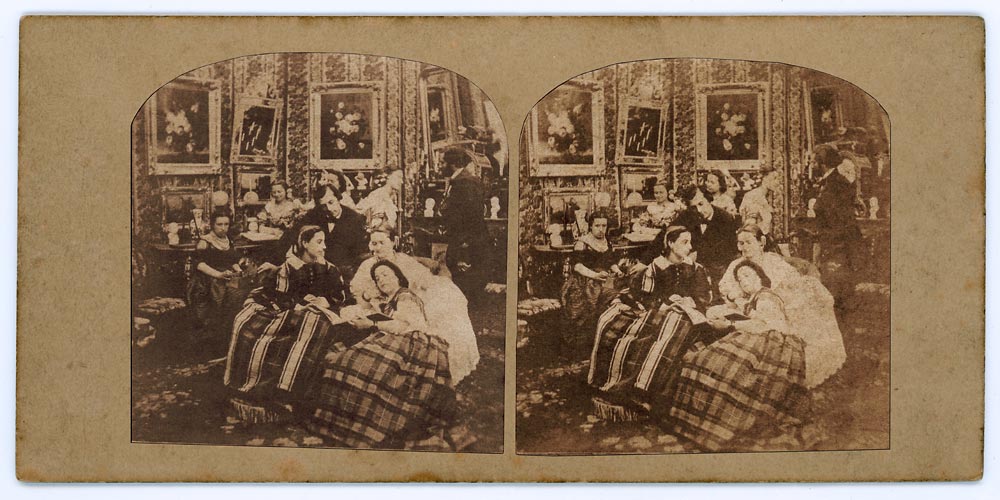
In the book, you describe him as the ultimate entertainer. Can you elaborate on this?
– All his life, Lefort seems to have devoted his energy to entertaining his fellow citizens, whether as a composer of comic songs, a toy-maker, an optician or a stereo photographer. He made them laugh but also travel, dream and escape from their daily lives through various optical instruments and dioramic slides with day and night effects, or through the scenes he staged for the stereoscope or the landscapes and interiors of palaces he photographed.
What do we know about his early years?
– We don’t know much, unfortunately. We know he was born in an educated family – his father was a primary school teacher at some point in his career – and also that he had brothers and sisters. The early years of his life are very sketchy and since, to my knowledge at least, he doesn’t seem to have left any written account of the years he spent on this earth, I could only rely on “official” documents – mostly birth, wedding and death certificates plus some articles I found in the press – to get to know a little about him. Photographers on the whole were never considered important enough to be written about, unless they were showmen like Nadar or Disdéri, and too many of them are only known through the photographs they have made. A shame, really.
When and how did he enter the world of entertainment? And how did he progress from there?
– He seemed to have worked as a designer of theatrical sets early in his professional life and also wrote some short plays in the 1830s, when he was still in his twenties. Then he got into writing lyrics of comic songs, some of which became hugely popular and were performed by the most renowned artists of the period. From then on he moved to toys, then optical toys, some of which he invented himself and patented, and finally to the best and most entertaining optical instrument of them all, the stereoscope.
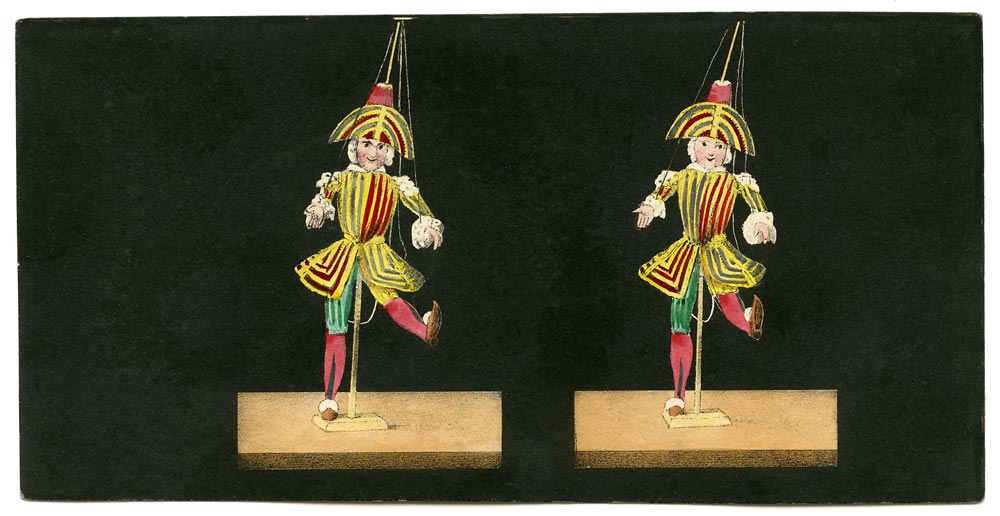
When and where did he start making stereoscopic views?
– It is difficult to pinpoint the exact date when Lefort started taking stereo photographs but we know for a fact he was already making stereoscopic drawings and selling stereoscopes as early as 1852. His first stereoscopic staged scenes were copyrighted in 1859 but since nobody copyrighted any stereo images in France prior to April 1857, it does not mean this is when he started making them. My guess is he must have taken his first stereos – topographical ones – around 1855 or 1856.
– What kind of images did he make? And how would you describe them technically?
Lefort produced topographical views of different countries and also photographs of the main imperial residences, Les Tuileries, Fontainbleau, Compiègne, etc. He is better remembered, however, for his 1200 or so staged scenes. These were all taken sequentially – the two halves of the stereoscopic pair were not taken simultaneously but one after the other. All are also hyper stereoscopic, which means that the depth is slightly exaggerated and more pronounced than it would be seen by human eyes. In order to do that Lefort, after taking the first half of the image, would move his camera to the right more than the average distance between the two eyes (65 mm). Probably twice that distance, and even over, I would say.
What differentiates Lefort from most of the other stereo photographers of the time is the size of the sets he used. He rented a former factory and turned it into a very large studio the like of which would only be seen decades later when the cinema became an industry. One of his largest and most elaborate sets represents the interior of Saint-Etienne-du-Mont Church in Paris. Although it is obvious the famous stone screen of the church is painted on a backdrop, the rest of the set is very much three-dimensional and even includes a pulpit in some of the variants. Numerous photos were made in this set, featuring weddings, communions, processions, the congregation during a mass or listening to a sermon.
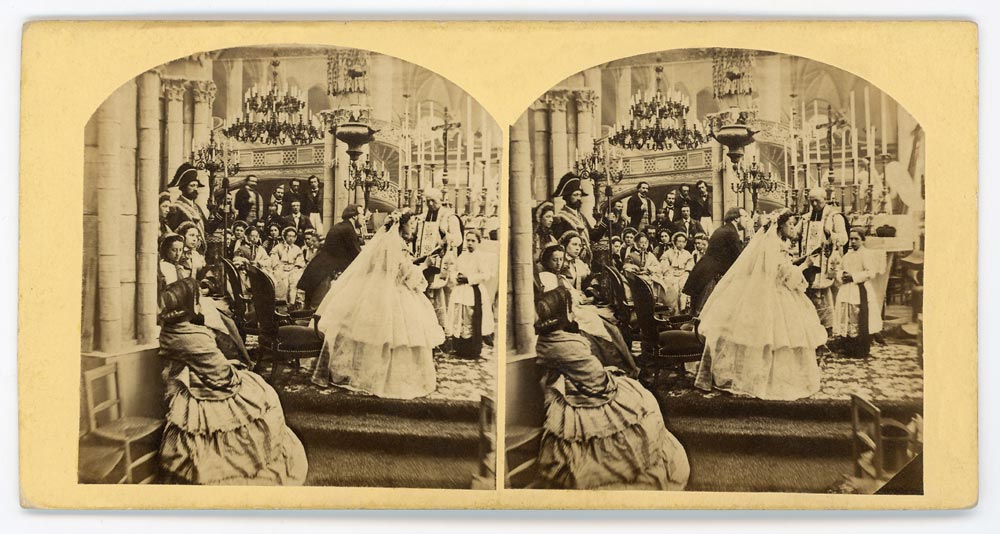
The most amazing thing with Lefort is that you feel you are part of the story, that you are really present in the scene. A lot of it is due to the fact that his sitters never look at the camera, except in very unusal occasions, like in the illustration below. They all seem to be minding their own business as people would in real life and they often haven their backs to the camera as in this fabulous image of people at mass.
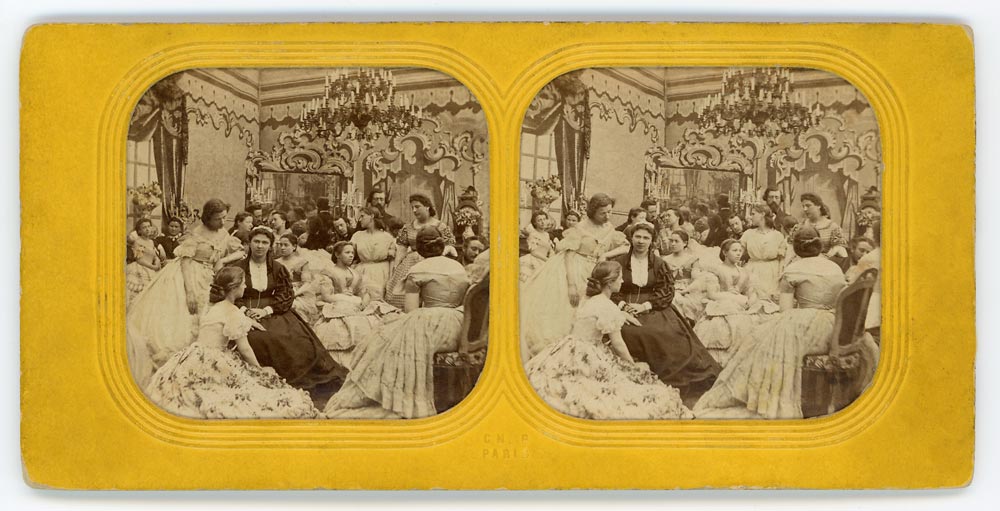
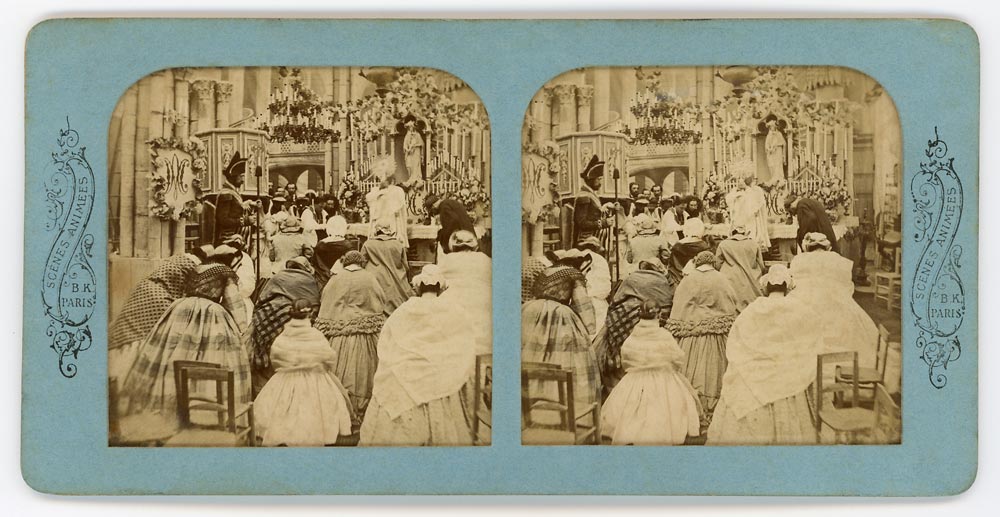
Lefort’s views are far from technically perfect but they have something which makes them catch the eye. There is so much to see in them you can spend a long time exploring all the different layers of depth and studying the faces, expressions and clothes of his numerous sitters (up to thirty in some images).
He produced what is these days called “tissues”. How were they made?
– Tissues were portable but direct descendants of Daguerre’s diorama. They were black and white photographs printed on very thin paper, the back of which was painted with watercolour. The print was then sandwiched between two die-cut mounts and the back of the card was covered in tissue paper which not only hid the works but also diffused the light. When the card was frontlit the image appeared in black and white with a day effect. When it was held to the light, the colours would come through as they would if the scene had been photographed at night. There were no colour photographs at the time (they would not appear commercially until the beginning of the twentieth century) but Lefort’s contemporaries wished for colour as well as depth. They really wanted the illusion given by the stereoscope to be as life-like as possible. And I must say they made a pretty good job of it.
How do they compare to the tissues made by his competitors?
– Lefort was one of the first French stereo photographers to use tissues probably because he had spent a lot of time in and around the theatrical world. The back of his photographs is often painted blue or grey with some areas deliberately left free of any paint. They look brighter when the stereoscope is held to a light and enhance the theatricality of his compositions.
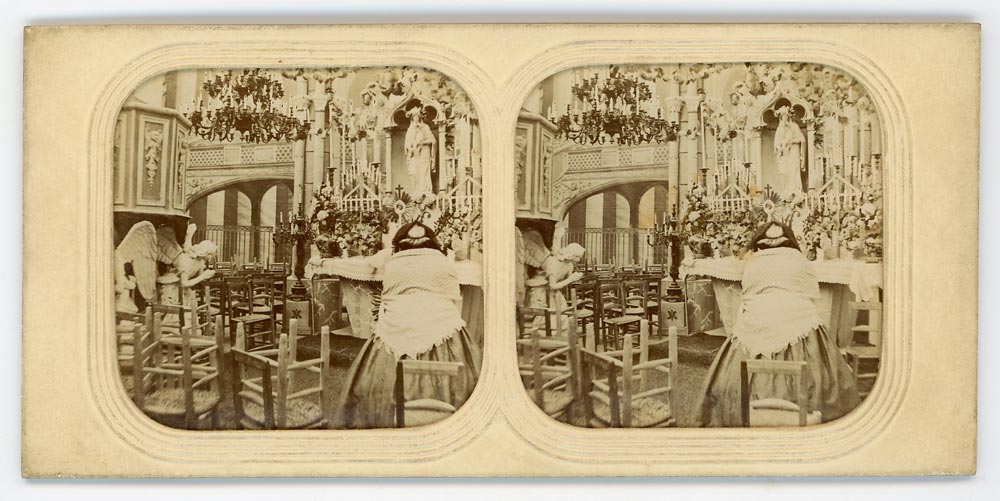
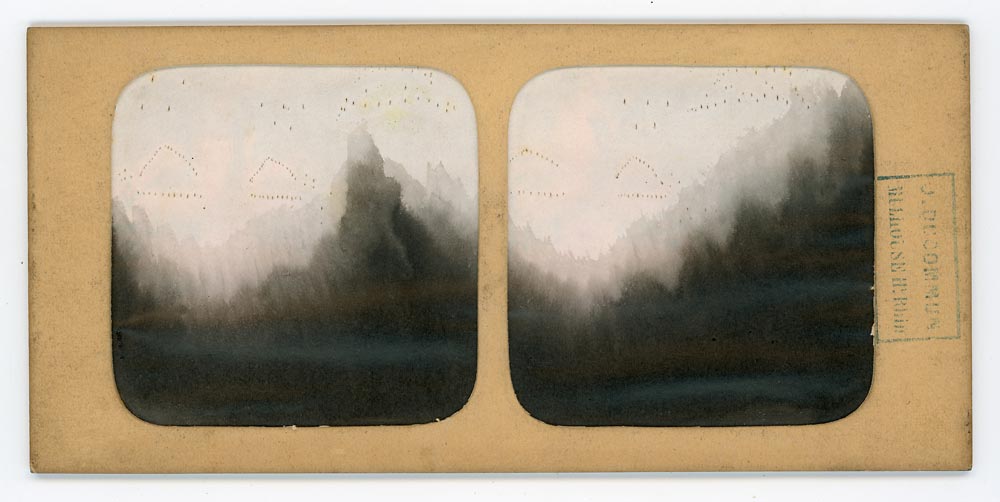
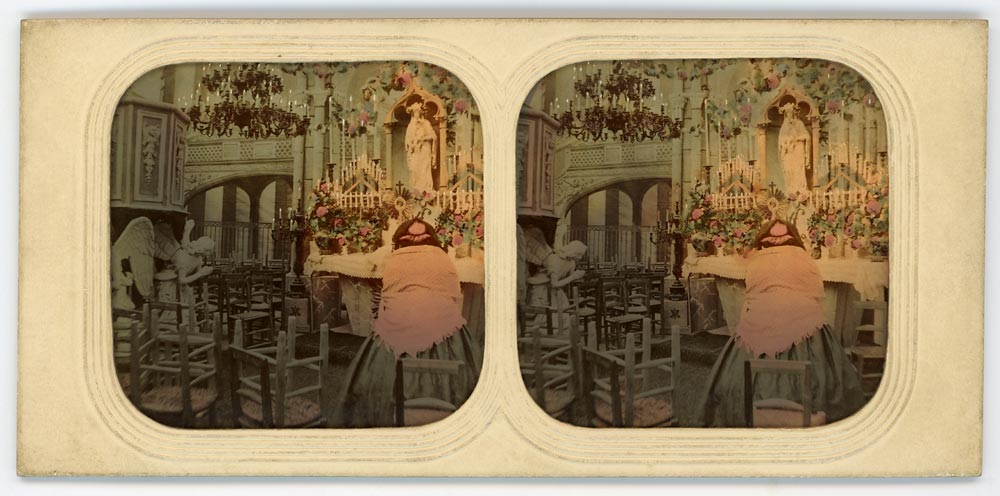
His work in and links with the world of theatre would, I suspect, have had a considerable impact on his images?
– They would indeed. Lefort must have had a passion for the stage all his life and it clearly shows in his work, which is directly influenced by the theatre of his time. Shakespeare said that the world is a stage, but one could say that for Lefort the stage was his world. All his staged scenes were made indoors, where he could control the composition and the light, as he would have done in a theatre had he been a stage manager.
Performers feature a lot in Lefort’s compositions: music hall singers, dancers, musicians, magicians, acrobats. That was the milieu he must have felt comfortable in and he obviously wanted to share his love of it with the public.
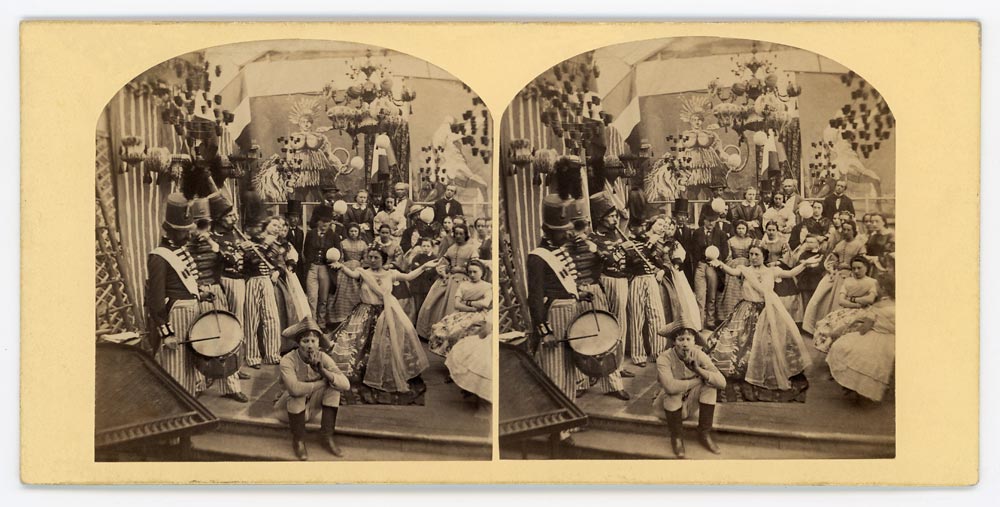
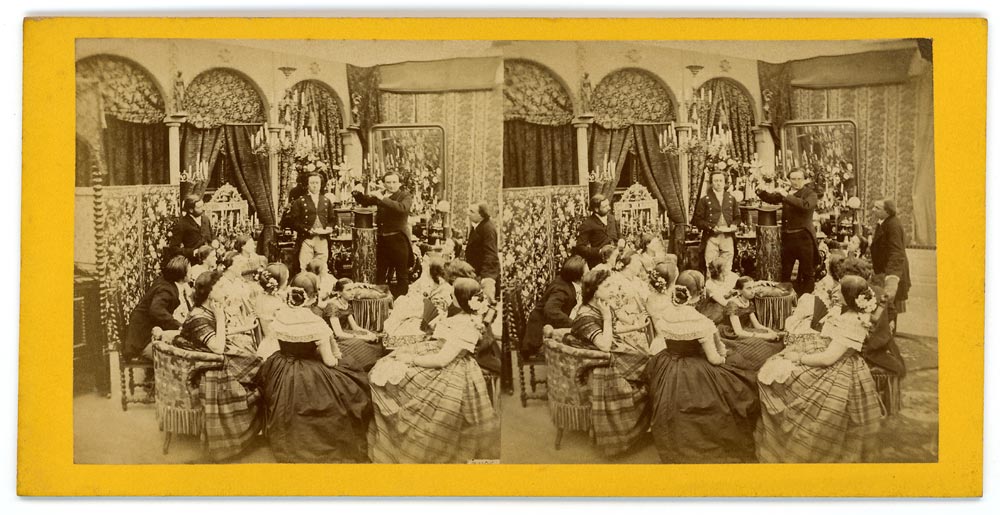
Was he successful commercially speaking?
– It is actually quite difficult to say since we have no sales figures but I honestly think he was because decades after he had stopped taking stereos his images were still being published – and pirated. They would not have been had they not been popular and successful to begin with.
When did he stop making views? And is it known how many he made in all?
– Lefort copyrighted his last stereos in 1864 and must have retired around that time. He sold his negatives to his former son-in-law who, on account of his poor health, had to sell them soon afterwards to the biggest publishers of stereoscopic images in France of the period, the Gaudin Brothers, or, to be more specific, to the youngest of the Gaudin brothers, Charles, who later published them under his own name. The sale was acknowledged and advertised in the columns of the photographic journal La Lumière, owned and run by the Gaudin family from 1851 to 1867.
I have already mentioned Lefort took some 1200 staged scenes. He must have published about the same number of topographical views. In total, nearly 2500 images which, considering how images were taken and printed in those days and how relatively short his career as a photographer was (around eight to nine years), is not bad at all. We must also take into account the time needed to collect all the props, build the sets from scratch and pose the models for all the variants he made of the same scene. These must have taken days of preparation.
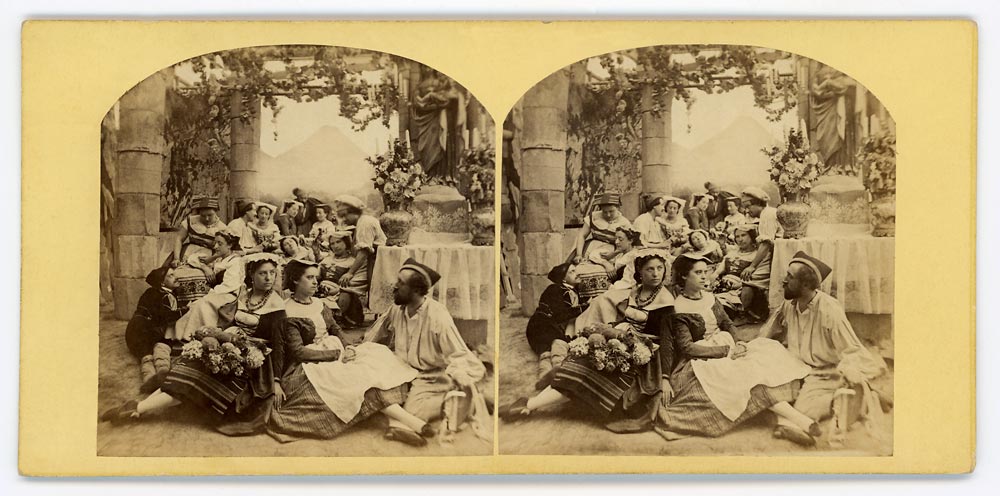
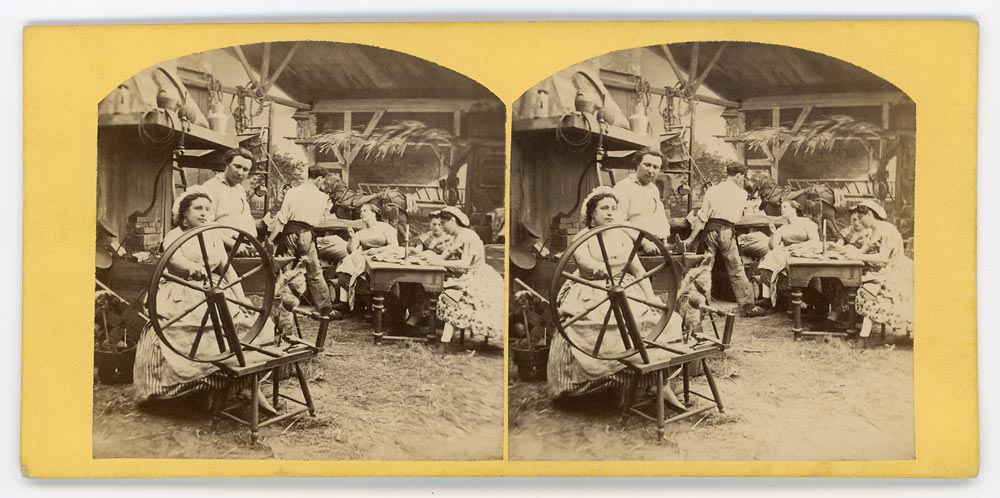
Do you have particular favourites?
That’s a tough question. I like so many of them. Usually, my favourite is the last one I have bought. I must confess however, I am very fond of all the compositions showing what happens behind the scene, something the audience doesn’t normally see: the extras and dancers backstage with the firemen and the stage hands, the dancers in their dressing room. I am also very fond of the images set in a painter’s or sculptor’s studio. There is so much to see there!
Download Denis Pellerin’s free online publication Henri Lefort: The Ultimate Entertainer here.
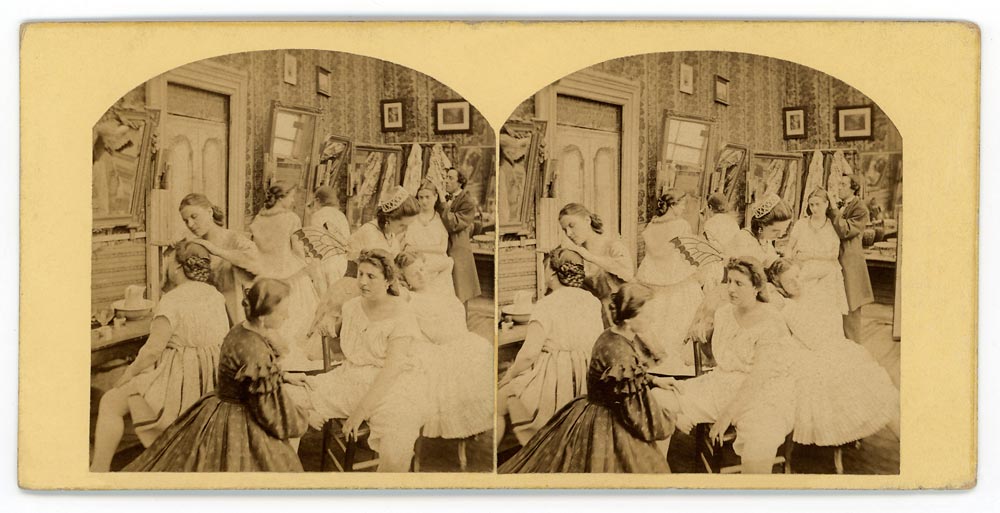
.

